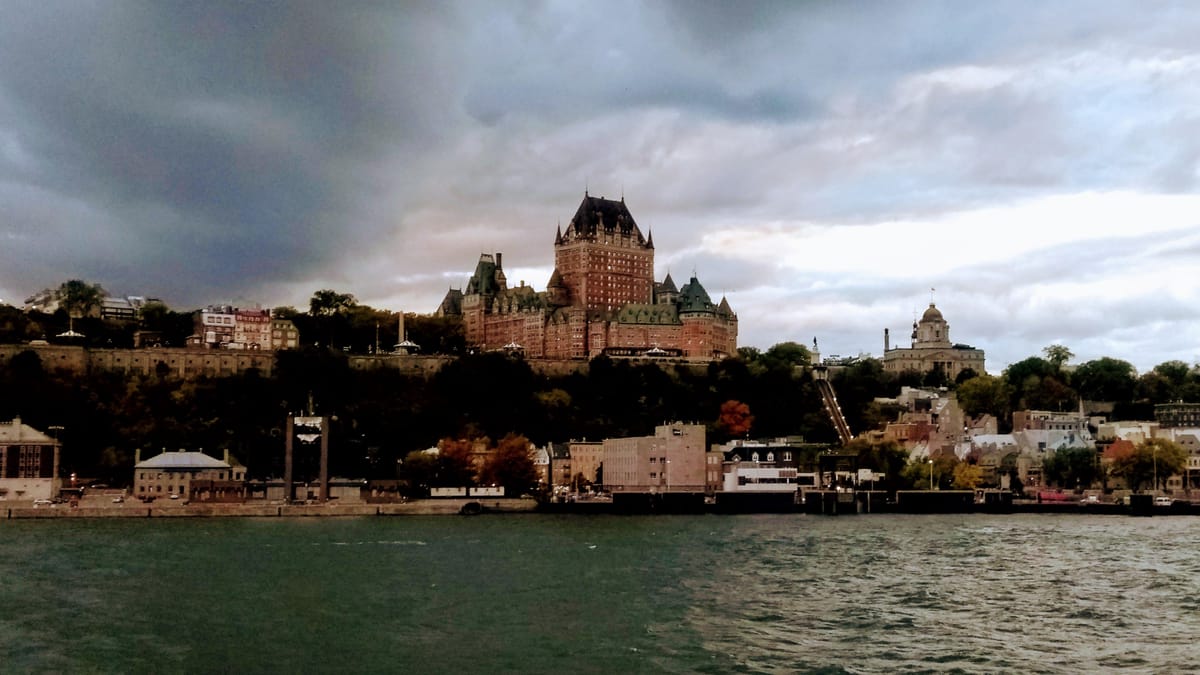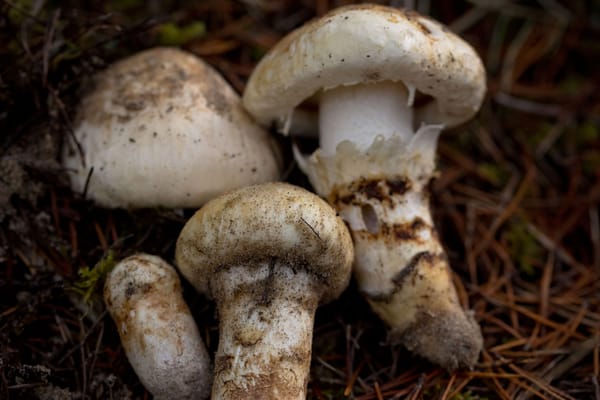Eco-theology and ethics Where the River Narrows

In the lead-up to the last Lambeth Conference, I was asked by the Theological Education in the Anglican Communion to join an international panel of Anglican scholars in producing teaching materials to help Anglican seminarians across the Communion to engage with the climate crisis. My task on this panel was to assist students in thinking about how their faith might relate to ethics, politics, and the environment, drawing on my dissertation research. The following is an excerpt from that resource.
a) In what ways might faith be political? How might we interpret this in regard to the climate and ecological crisis?
I want to begin with a theological and anthropological claim—a claim about how we understand God, and how our understanding of God helps us to understand ourselves as human animals, and our place in the world. My claim is this: human animals are creatures, created by the triune God—the same God who has revealed God’s self to us in a particular way through Israel and Jesus. We are the creatures of Israel’s God—this is the revelation that we, as Gentile Christians, have come to know and to proclaim through Jesus.
We are creatures. I want to dwell here, because it is in our creatureliness that God has created us to dwell, and it is in our creatureliness that God has dwelt among us. We need to dwell here because, in a very real way, our creatureliness is a divine revelation.[i]
We are creatures. We live in particular places, with particular peoples, in particular ways, at particular times. We are not every creature. We are a particular kind of creature. We are human animals. We don’t have feathers, birds do. We don’t build ant-hills, ants do. Part of what it means to be a human kind of creature, is to live within communities with other human and other-than-human creatures, and that is what politics and ethics are about.[ii] Politics and ethics address the questions: how do and how ought we to live together as communities? For those who see themselves as creatures of the triune God, we need to expand those questions: how do and how ought we to live together here as human creatures, within the wider communities of God’s creation?
b) Where are we now and how did we get here?
I want to emphasize the “Where” in the question “Where are we now and how did we get here?” Where is here? As a white settler living in a place reshaped by European colonists, I think to answer this question with integrity, I have to critically examine my own sense of where I find myself now.
I live beside a massive river that is commonly known in English as the St. Lawrence River, and where I live is where this river narrows just enough that it can be crossed more easily. The Algonquin speaking Indigenous peoples who inhabited and continue to inhabit this land called this place “Quebec,” from the Algonquin word for “narrow passage” or “strait.”[iii] Quebec City, where I live, is Where The River Narrows.
Where the River Narrows was a place named and known by particular peoples prior to the arrival of my own peoples.[iv] They had a relationship to this land, a land that shaped their language, identity, and daily lives.
The tragedy of colonialism where I live is that, while our European ancestors arrived in this place about 500 years ago, they never really entered it.[v] Certainly, they did set up colonies, and they even learned some survival skills from the Indigenous peoples who took pity on them as their inexperience in the land literally killed them.
But they never really joined with the Indigenous peoples of this land, to learn not only the rhythms of the land, but also the rhythms of the peoples with the land. They did not stop to ask themselves, "Where is here?" And how do and how ought we to live together here as human creatures, within the wider communities of God’s creation?
In the words of the American theologian Willie James Jennings, “[...] it is as though Christianity, wherever it went in the modern colonies, inverted its sense of hospitality. It claimed to be the host, the owner of the spaces it entered, and demanded native peoples enter its cultural logics, its ways of being in the world, and its conceptualities.”[vi]
And so our European ancestors erected crosses on the rivers where they landed and then over-fished, and on the mountains where they climbed and then logged, and they blessed them.[vii] In many cases, they did not know, and they cared not to learn, the many names by which these places were already known and blessed. They did not imagine that the relationships between other lands, peoples, and creatures might stand as a revelation of their own creatureliness, and might reshape their own creaturely relations within that land. In contrast, they attempted to reshape both the land and the peoples of the land, into a new way of relating: as resources to be extracted, as commodities to be sold.[viii]
We know the immediate causes of climate change. We know the immediate causes of biodiversity loss. What we seem to struggle with are the moral and theological imaginations that make those causes seem not only natural, but providential. Where I live is now a very secular place. But the crosses still stand on the mountain tops, and the trees continue to fall.
c) Where do we go from here?
Climate change and biodiversity loss are not problems of more information but of moral imagination. Speaking as a white settler living beside the St. Lawrence River, I believe we have lost our sense of our creatureliness as a revelation of God. Our imagination of our creaturely relations—both between human and other-than-human animals—is almost entirely determined by the logic of extraction and sale, the logic of commodity production.
My ancestors tried to systematically destroy the languages of the Indigenous peoples of this land, in order to prevent their ways of naming, relating, and blessing the land from getting in the way of the colonial story and practice of possession, extraction, and sale.[ix]
But, as Gentile Christians, we are also heirs of another story. We are also a people who proclaim to be followers of the God of another people, of Israel. Through Jesus, God has invited us to the table that God had already set for Israel. This “gentile remembrance,”[x] as Jennings calls it, is a divine lesson in learning how to become a people who enter into the stories of other peoples—who learn from the lands and their human and other-than-human inhabitants not as those who possess and replace but as those who join with.
I think, to address the crises of climate change and biodiversity loss, we need to reclaim our sense of creatureliness being itself a revelation of the triune God.
Part of our task as Christians is thus to make visible the ways in which our creatureliness has been and continues to be concealed from us by our social, political, economic, and geographical arrangements and practices.[xi] Our theological tradition provides us with some of the tools we need to do this “imaginative work,” but it also requires the help of those who stand outside our traditions.
What does this look like for those engaged in pastoral ministry? I think the answer to the question “where we go from here” is going to look radically different for everybody reading this today. You probably live by different rivers than I do. You probably live by different peoples, histories, and creaturely neighbours than I do.
Just as Jesus came to dwell in a particular place, with a particular people, in a particular way, at a particular time, so too will you, as disciples of Jesus need to join with the particular land and the peoples of the land where you dwell.
For those who live Where the River Narrows, I think this looks like joining with the land by joining with some of the Indigenous peoples whose traditional territory this land includes, such as the Wendat of Wendake. In order to reclaim our sense of creatureliness as Christians, I think we need to hear the stories of the Wendat people, we need to learn from their ways of understanding the relationships between the peoples and the land, ways that Christianity and its secular successors have actively sought to suppress.[xii] And, critically, we need to join with them in their ongoing struggles to resist the continuing transformation of the land into commodities, to preserve the land and all its creatures as sacred.
That is how I would tell the story of the ethics and the politics of climate change and biodiversity loss Where the River Narrows. My question for you is, where do you dwell? What other peoples, creatures, and stories of the land dwell with you there? And how do and how ought you to live together there as human creatures, within the wider communities of God’s creation?
[i] Jennings, Willie James, “Reclaiming the Creature: Anthropological Vision in the Thought of Athanasius of Alexandria and Karl Barth,” Graduate Program in Religion, Duke University 1993.
[ii] As Aristotle famously (and also problematically) put it, humans are by nature political animals (Politics 1253a). Moreover, as William Cavanaugh has persuasively argued from a Catholic perspective, the claim that Christian faith (and the church) and politics need to be kept separate is a form of docetism: it denies the incarnation of our faith in both our physical and political bodies. See William T. Cavanaugh, Torture and Eucharist : Theology, Politics, and the Body of Christ (Oxford, UK : Blackwell Publishers, 1998).
[iii]Government of Canada, Quebec’s provincial symbols (accessed March 14, 2022) https://www.canada.ca/en/canadian-heritage/services/provincial-territorial-symbols-canada/quebec.html#a1.
[iv] What is more commonly known today as Quebec City lies within the traditional territories of the Wendat, and the Nadouek of the St. Lawrence, their ancestors, and their descendants. Note that I am following the Wendat scholar Georges E. Sioui in his resistance to using the exonym “Iroquois.” See Georges E, Sioui, Huron-Wendat: The Heritage of the Circle (Vancouver, CA: UBC Press, 2000), xix.
[v] This imagery of arriving without entering is drawn from Robin Wall Kimmerer, Braiding Sweetgrass: Indigenous Wisdom, Scientific Knowledge, and the Teachings of Plants (Minneapolis: Milkweed Editions, 2013), 207.
[vi] Willie James Jennings, The Christian Imagination: Theology and the Origins of Race (New Haven: Yale University Press, 2010), 8.
[vii] See for instance the more recently erected croix du Centenaire on the Saguenay River, Quebec. Répertoire du patrimoine culturel du Québec, (accessed March 14, 2022) https://www.patrimoine-culturel.gouv.qc.ca/rpcq/detail.do?methode=consulter&id=93622&type=bien
[viii] Willie James Jennings, “Reframing the World: Toward an Actual Christian Doctrine of Creation,” International Journal of Systematic Theology, vol. 21, no.4 (October 2019): 388-407.
[ix]One way in which this was attempted was through the government mandated and church run Indian Residential School System, in which, in a well documented policy of genocide, the Canadian state systematically removed Indigenous children from their families and communities and sent them to live in church run boarding schools, in order to erase their languages and cultures, and therein, to destablize and assimilate Indigenous communities.
[x] Jennings, The Christian Imagination, 98, 252-249.
[xi] See Jennings, “Reclaiming Creatureliness.”
[xii] In my context, Sioui provides a particularly helpful account of both the problematic Christian colonial imagination of our relationship to Creation, as well as the insights Wendat culture might bear in addressing those problems. See Georges E, Sioui, Huron-Wendat: The Heritage of the Circle (Vancouver, CA: UBC Press, 2000).



